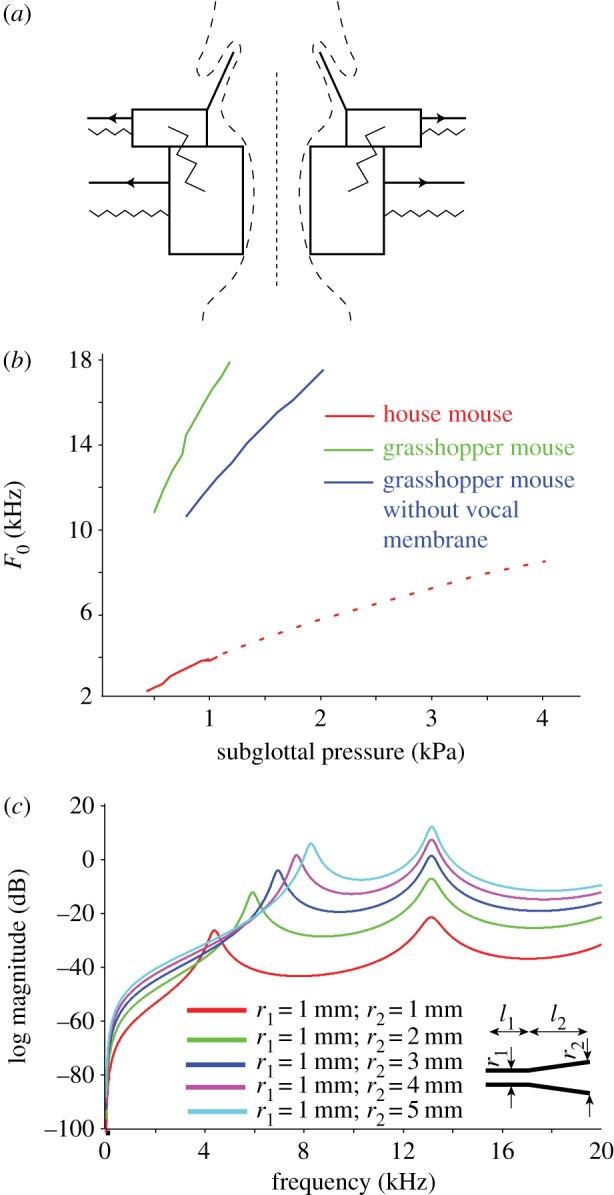Figure 6.

Sound production mechanism models in grasshopper mice (Onychomys). (a) Schematic of vocal membrane model. (b) Phonation threshold pressures (PTP) for house mouse and grasshopper mouse phonation. Note that the smaller lamina propria facilitates higher fundamental frequencies in grasshopper mice (blue line) than in house mice (red line). The dotted red line extrapolates the PTPs theoretically needed for house mice to produce high-frequency calls typical of Onychomys. The vocal membranes (green line) increase glottal efficiency by reducing the lung pressure required to initiate phonation. (c) Vocal tract models ranging between a uniform tube and a tube with bell-shaped mouth opening. The latter simulates a mouse producing a long-distance call with a wide-open mouth (figure 5). Relative radiated power level as a function of frequency, for a constant input volume flow at the larynx, with a vocal tract shape ranging from a uniform tube to vocal tract with flared bell-shaped opening. r1, radius of the vocal tract; l, length of segments 1 and 2 of the vocal tract; l1 = 7 mm and l2 = 13 mm; r1 = 1 mm for all experiments; r2 is flared and was altered from 1 to 5 mm. (Online version in colour.)
